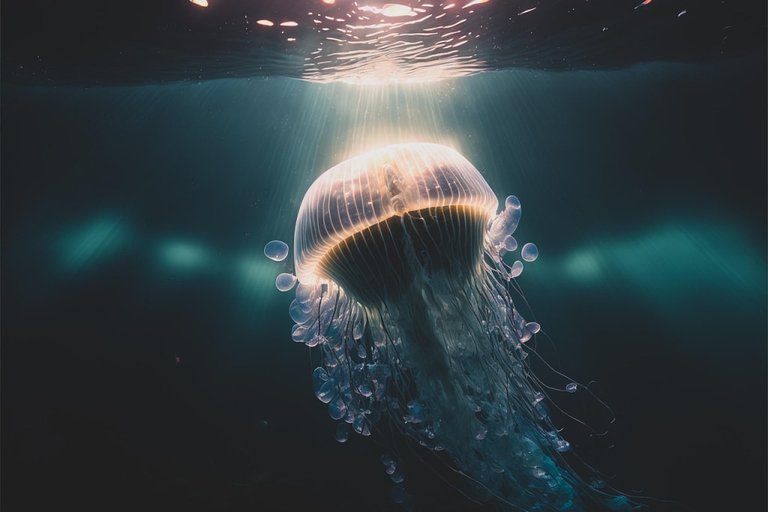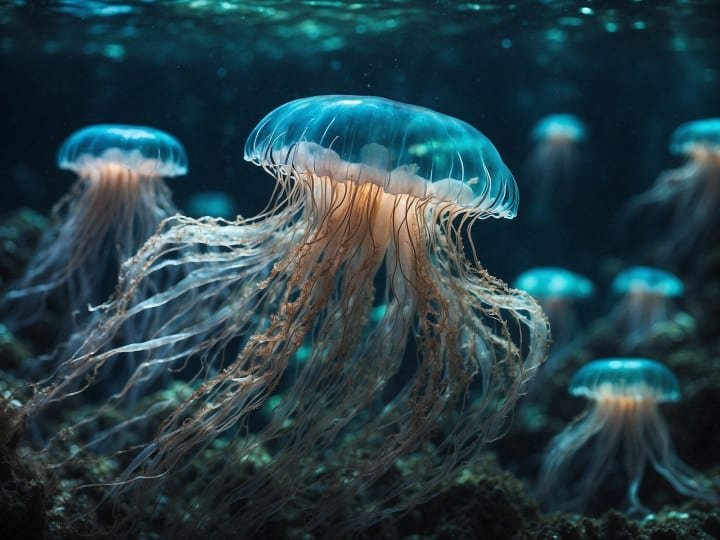The Immortal Jellyfish: Nature's Incredible Secret to Eternal Youth

The natural world is full of wonders, but few organisms are as fascinating as Turritopsis dohrnii, more commonly known as the "immortal jellyfish." This tiny, almost unassuming creature has captivated scientists and nature enthusiasts alike due to its extraordinary ability to revert to its youthful state after reaching maturity, essentially defying the natural process of aging. The implications of this seemingly miraculous ability are profound, and studying it could revolutionize our understanding of biology, aging, and even human health.
In this post, we'll dive into the remarkable life cycle of the immortal jellyfish, explore how it manages its perpetual youth, and consider what this means for science and the future of regenerative medicine.
The Fascinating Life Cycle of the Immortal Jellyfish
To understand why the immortal jellyfish is so unique, we need to look at its life cycle. Like all jellyfish, Turritopsis dohrnii starts as a fertilized egg, which develops into a larva, known as a planula. This larva eventually settles on the seafloor and morphs into a polyp, which is an early stage of its life. The polyp is an immobile, tiny organism that looks more like a small coral than a jellyfish.
From the polyp stage, the jellyfish begins to grow into a mature medusa, a free-swimming, umbrella-shaped adult. At this stage, it is capable of reproducing and completing its life cycle. However, this is where the story takes a remarkable turn.
Unlike most jellyfish, which live their lives from birth to death in a linear fashion, Turritopsis dohrnii has developed a process known as "transdifferentiation." This means that when the adult jellyfish faces physical stress, injury, or unfavorable environmental conditions, it can reverse its life cycle, turning back into a polyp, a juvenile form of itself, thus starting its life over.
How Does It Work?
The ability of the immortal jellyfish to revert to an earlier stage of development is a process known as transdifferentiation, a rare phenomenon in the animal kingdom. During this process, specialized cells in the jellyfish transform, changing from one type of cell to another. This means the jellyfish's mature cells "turn back the clock" to become younger cells, effectively resetting their biological age.
This ability is triggered when the jellyfish experiences certain stressors. It could be a change in temperature, a lack of food, physical damage, or other environmental factors. When these stressors occur, the jellyfish can essentially bypass its normal death process and revert to its polyp stage. From there, it can regenerate and begin its life cycle once again, escaping the typical aging process.
The process is incredibly complex and not yet fully understood by scientists, but the key takeaway is that this jellyfish can avoid the usual biological fate of growing old and dying. Instead, it essentially becomes immortal, living in a continuous loop of rejuvenation.

Why Is This So Fascinating?
The concept of immortality has captivated humanity for centuries, often appearing in myths, legends, and stories of the search for the "Fountain of Youth." While humans are far from achieving eternal youth, the immortal jellyfish offers us a glimpse into a biological reality where aging can be reversed. This opens up a world of possibilities for science and medicine.
The most immediate area of interest is regenerative medicine. By studying how the jellyfish's cells undergo transdifferentiation, scientists hope to unlock mechanisms that could potentially help humans regenerate damaged tissues, organs, and perhaps even reverse the effects of aging. If these processes could be applied to human biology, it could change the way we think about aging, diseases, and even the potential for extending human life.
Could Humans Ever Achieve Immortality?
While we are far from achieving anything remotely close to the immortal jellyfish's abilities, the concept of reversing the aging process in humans has long been a topic of scientific research. Researchers are already studying various ways to extend human lifespan, including gene therapy, stem cell treatments, and the search for drugs that could slow or even reverse aging. The study of Turritopsis dohrnii could provide crucial insights into how these processes work, potentially bringing us closer to some of these revolutionary breakthroughs.
It’s important to note that achieving true immortality, living forever, is likely not feasible for humans. Aging is a complex process influenced by countless factors, from genetics to environmental exposure. Even if we could find ways to extend human life significantly, it’s unlikely we’ll ever escape the natural biological processes entirely.
However, the lessons from the immortal jellyfish could help us understand how to mitigate the effects of aging, slow down degenerative diseases, and extend our healthy years. In many ways, this could lead to a profound shift in how we approach health and wellness in the future.
The Immortal Jellyfish's Role in the Ecosystem
While the immortal jellyfish’s ability to revert to its youthful form is astonishing, it’s important to understand that this is not merely a survival tactic for individual jellyfish. It also plays a role in maintaining balance in the ecosystem. By effectively avoiding death from old age, the jellyfish can continue to reproduce and contribute to the population, ensuring the survival of the species.
In fact, some researchers believe that this regenerative ability might be a result of evolutionary pressures. In certain environments, where food is scarce or conditions fluctuate, the ability to "reset" the biological clock could give the jellyfish a survival advantage over other marine organisms.
Potential Challenges in Studying Immortality
While the idea of immortality is captivating, it’s important to note that there are still many unknowns surrounding the jellyfish's ability to reverse aging. Scientists have yet to fully understand how this transdifferentiation process works on a molecular level. The mechanisms behind it involve complex cellular biology, and as of now, there’s no straightforward way to replicate this process in other organisms, let alone humans.
Furthermore, the jellyfish’s ability to regenerate its cells doesn’t mean it’s completely immune to death. It’s still vulnerable to disease, predation, and environmental hazards. Its immortality only refers to its ability to avoid the effects of aging, not to its complete invulnerability.
What Can We Learn from the Immortal Jellyfish?
The immortal jellyfish presents a fascinating case study in biology, aging, and regeneration. While it is unlikely that humans will ever be able to achieve true immortality, there are numerous lessons to be learned from this remarkable creature. Its ability to revert to a younger form provides important insights into the processes of cellular regeneration, which could pave the way for advances in medicine.
In a world where aging and disease are among the greatest challenges faced by humanity, understanding how nature has found a way to cheat death, even if only temporarily, could hold the key to solving some of our most pressing health issues. Whether or not we can replicate the immortal jellyfish’s tricks remains to be seen, but the journey to understanding this biological phenomenon could shape the future of medicine for generations to come.
The immortal jellyfish is a living testament to nature's ingenuity, a creature that has evolved a way to escape the biological clock that governs so many living organisms. While we may never fully understand how it does this or replicate its abilities in humans, the research it inspires could have profound implications for science, medicine, and our approach to aging.
As scientists continue to unlock the secrets behind the immortal jellyfish's extraordinary powers, one thing is clear: the pursuit of eternal youth may be more grounded in reality than ever before. And who knows, perhaps one day, we’ll be able to harness nature’s secrets to create a future where aging is no longer something to fear.
#science #history #news #fact #blog #articles #writers
Posted by Waivio guest: @waivio_cosmicsecrets